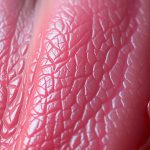Mottled skin, also known as livedo reticularis or cutis marmorata, is a skin condition characterized by a distinctive lace-like pattern of skin discoloration. This unique appearance can range from a subtle reddish-blue hue to a more pronounced mottled or blotchy look. Understanding mottled skin is crucial for identifying the underlying causes and seeking appropriate treatment options.
In this article, we’ll delve into the complexities of mottled skin, exploring the common areas where it manifests, the different types of skin mottling, and the distinction between normal and concerning patterns. Additionally, we’ll discuss the medical conditions that can lead to skin mottling, as well as natural remedies and prevention methods to help maintain healthy, even-toned skin.
By understanding the nuances of mottled skin, we can empower individuals to better recognize and manage this condition, ultimately improving their overall skin health and confidence. Join us as we unravel the mysteries of this fascinating skin phenomenon.
Understanding Mottled Skin Patterns and Appearance
Mottled skin, also known as livedo racemosa, is characterized by a reticular pattern of reddish-blue or purplish discoloration on the skin. This distinctive appearance is caused by changes in the vascular system, which can lead to a variety of skin mottling patterns. Understanding these patterns and their underlying causes is crucial for identifying normal variations versus potentially concerning medical conditions.
Common Areas Where Mottling Occurs
Mottled skin is most commonly observed on the arms, legs, and trunk, particularly in areas with a high concentration of blood vessels close to the surface of the skin. The mottled appearance may be more prominent in colder temperatures or when the body is exposed to other environmental factors that can trigger vascular changes.
Different Types of Skin Mottling
- Livedo racemosa: This is the classic reticular pattern of mottled skin, often described as a “fishnet” or “lace-like” appearance.
- Reticular erythema: A more uniform reddish discoloration of the skin, sometimes with a slightly raised or blotchy texture.
- Acrocyanosis: A bluish or purplish discoloration, typically seen in the hands, feet, and other extremities, often triggered by cold exposure.
Normal vs. Concerning Patterns
In many cases, mottled skin is a harmless and common occurrence, particularly in individuals with fair skin or those exposed to cold temperatures. However, in some instances, the mottled pattern may be a sign of an underlying medical condition, such as an autoimmune disorder or vascular disease. It is important to be aware of the normal variations in skin mottling and to seek medical attention if the pattern appears persistent, worsens, or is accompanied by other concerning symptoms.

“Understanding the nuances of skin mottling patterns can help individuals recognize when medical attention may be necessary.”
Medical Conditions That Lead to Skin Mottling
Skin mottling can be a visible manifestation of various underlying medical conditions. Understanding the root causes of this peculiar skin pattern can help us better manage and address the problem. Let’s explore some of the common medical conditions associated with mottled skin.
Autoimmune disorders, such as lupus and Raynaud’s phenomenon, can trigger skin mottling by affecting the body’s circulatory system. These conditions cause blood vessels to constrict, leading to poor blood flow and the characteristic blotchy skin appearance.
Blood clotting issues, including deep vein thrombosis and antiphospholipid syndrome, can also contribute to skin mottling. When blood clots form, they can restrict blood flow and cause the skin to take on a mottled or marbled look.
Circulatory problems, like peripheral artery disease and Buerger’s disease, impair blood circulation and can result in mottled skin, particularly on the extremities. The reduced blood flow causes the skin to appear discolored and uneven.
| Condition | Description | Impact on Skin Mottling |
|---|---|---|
| Autoimmune Disorders | Conditions like lupus and Raynaud’s phenomenon that affect the body’s immune system | Constrict blood vessels, leading to poor blood flow and blotchy skin |
| Blood Clotting Issues | Conditions like deep vein thrombosis and antiphospholipid syndrome that cause blood clots | Restrict blood flow, resulting in a mottled or marbled skin appearance |
| Circulatory Problems | Conditions like peripheral artery disease and Buerger’s disease that impair blood circulation | Reduce blood flow, causing discolored and uneven skin on the extremities |
By addressing the underlying medical conditions, we can often improve the appearance of mottled skin and alleviate the associated symptoms. Consulting with a healthcare professional is crucial for proper diagnosis and treatment.

Natural Remedies and Prevention Methods
Addressing mottled skin requires a multi-faceted approach, and we’re here to guide you through effective natural remedies and prevention strategies. By making lifestyle changes, adjusting your diet, and incorporating targeted exercises, you can improve circulation and support overall skin health.
Lifestyle Changes to Reduce Mottling
One of the key steps to managing mottled skin is to address underlying factors that contribute to poor circulation. Practices like stress management, staying hydrated, and avoiding smoking can make a significant difference in the appearance and severity of skin mottling.
Dietary Considerations
The foods we consume play a crucial role in skin health. Incorporating antioxidant-rich fruits and vegetables, healthy fats, and nutrient-dense foods can help improve circulation and nourish the skin from the inside out. Staying hydrated and limiting processed foods are also important dietary considerations.
Exercise and Circulation Tips
Engaging in regular physical activity can be highly beneficial for improving circulation and reducing the occurrence of skin mottling. Activities that promote blood flow, such as cardiovascular exercise, yoga, and gentle massage, can help promote healthy skin tone and appearance.











